Choosing a Medical Facility Location- Should You Buy or Lease?
The decision to buy or lease property in Los Angeles to open your medical facility is one that involves many pluses and minuses. In truth, there are benefits to both decisions. While it’s cheapest to lease a commercial space, you could lose out on the freedom to make design and renovation choices.
Let’s say you need to resurface your parking lot to accommodate more patients. As the owner of your property, you could begin a small construction project with the help of an experienced medical contractor. If you were renting, then you would have to appeal to your landlord, and may ultimately lose patients.
Freedom isn’t cheap.
Let’s face it- buying a medical office space to start your new walk-in clinic will require long-term commitment, strategic goal implementation, and a good line of credit. Conversely, subleasing a medical space saves money and affords you the ability to grow into your new practice organically, without having to worry about property taxes or medical building and construction compliance issues.
However, freedom comes with a cost. One of the great things about owning your own medical facility is the fact that its equity lies in your hands. When you’re the landlord, you get to decide which structural changes need to happen immediately, and which design elements can be added in time.
Especially in this Covid age, it’s never been more important to be able to make adaptations to a surgery center waiting room, install alternate patient entry corridors, or renovate your nurses’ station for maximum efficiency.
Can’t find a medical office space for sale in your chosen location? Consider renovating a private home and transforming it into a private clinic. This is an especially good option for outpatient services that perform best in a relaxed, warm environment.
Examples include:
- Drug and detox clinics
- Psychological counseling
- Hospice care
- Assisted living facilities
Your design layout should include a waiting room, several patient examination rooms, and a physician space for records and private communications. Consider patient parking availability and accessibility for handicap entries.
What size property should I look for?
Are you opening a private solo practice, or are you sharing your office space with other doctors? For one attending physician, approximately 1,500 square feet should suffice. Add 1,200 square feet for each additional doctor. This should include space for a few exam rooms, a waiting room, a private office, and storage space.
Tips to consider:
- Implement aesthetic decor strategies to put your patients at ease.
- Consider modular elements that sustain efficient workflow.
- Save money by utilizing green lighting tactics.
Save even more money by purchasing turnkey equipment.
Image credit:
Photo by Cameron Venti on Unsplash
